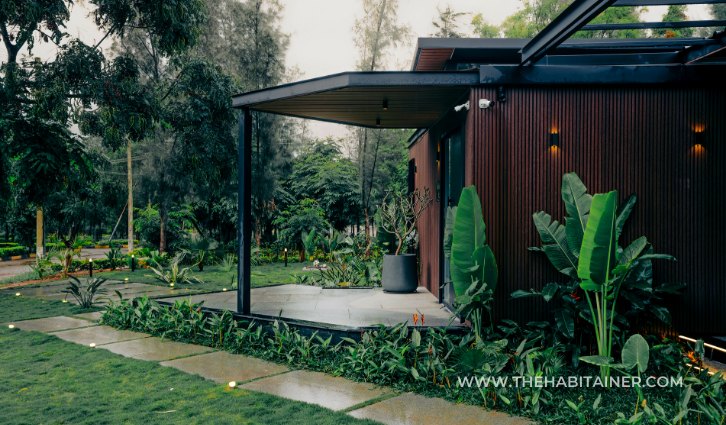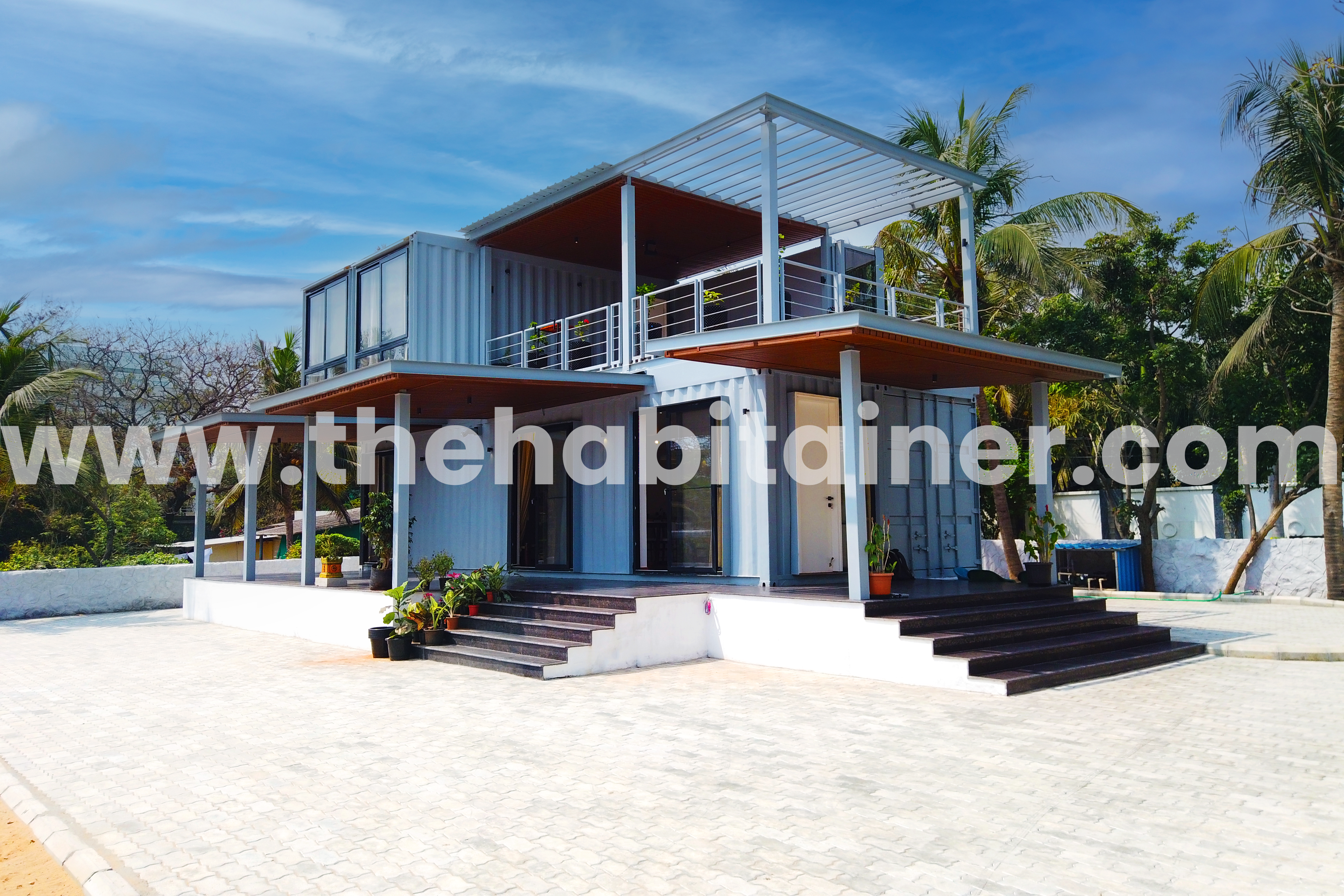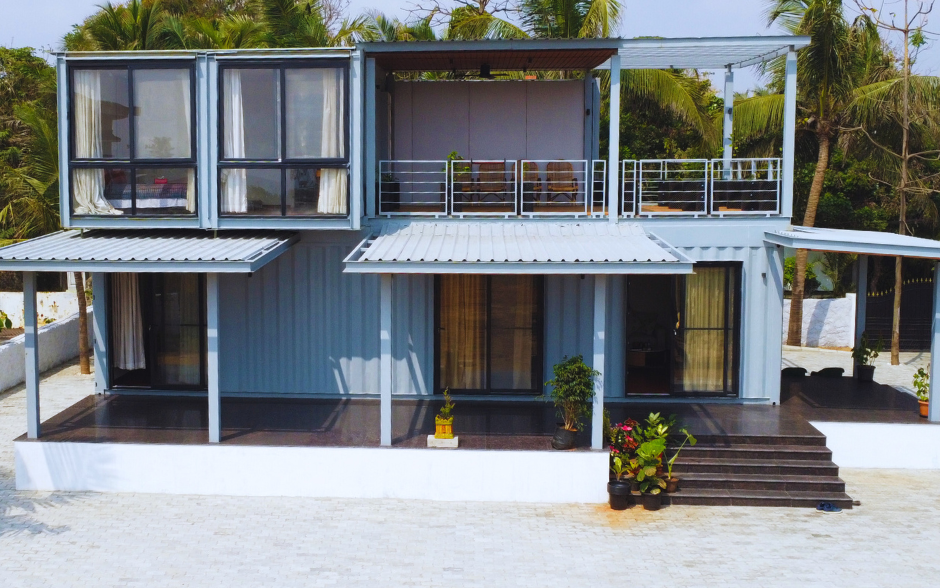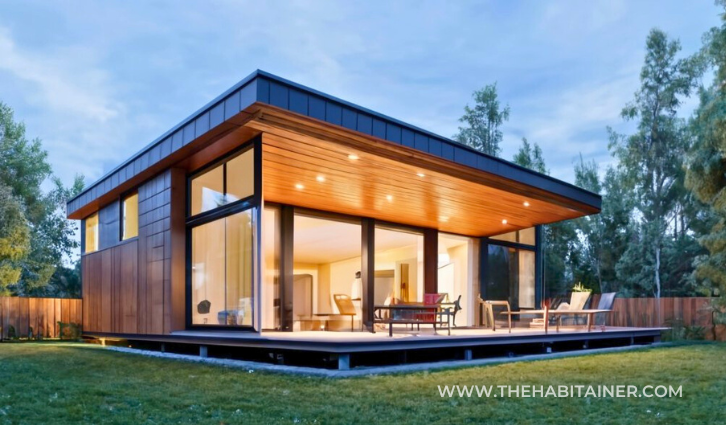Are you tired of living in a traditional home with high energy bills and a significant carbon footprint? If yes, then a container farm house is the perfect solution for you. Sustainable living is no longer just a buzzword but a necessity, and container farm houses are gaining popularity among those who want to live an eco-friendly lifestyle.

What is a Container Farm House?
A container farm house is a structure made from shipping containers that have been repurposed into livable spaces. These containers are usually 20 or 40 feet in length and are made of corrosion resistant steel, which makes them extremely durable. Container farm houses are a sustainable and cost-effective housing solution for those who want to live off the grid and minimize their environmental impact.
Advantages of Building a Container Farm House
1. Cost-effective
One of the primary advantages of building a container farm house is that it is cost-effective. Shipping containers are inexpensive, and you can purchase them at a fraction of the cost of building a traditional home. You can save a considerable amount of money by using shipping containers as building blocks for your new home.
2. Eco-friendly
Container farm houses are an excellent eco-friendly housing solution as they promote sustainable living. Using shipping containers to build a home is an environmentally friendly option as it reduces the need for new construction materials. Moreover, the steel construction of shipping containers makes them highly durable and long-lasting.
3. Customizable
Another advantage of building a container farm house is that it is highly customizable. You can modify shipping containers to fit your specific needs, including the number of rooms, windows, and doors. You can also add insulation, ventilation, and other features to make your container farm house comfortable and energy-efficient.
4. Mobility
Container farm houses are not fixed to the ground and can be moved if necessary. This feature makes them an excellent option for those who want to live in remote areas or have a mobile lifestyle. You can also use container farm houses as temporary housing solutions, such as guest houses, home offices, or Airbnb rentals.
How to Build a Container Farm House
Building a container farm house is not as complicated as it may seem. Here is a step-by-step guide to help you get started.

1. Design and Planning
The first step in building a container farm house is designing and planning. You need to decide on the size, layout, and features of your home. You can hire an architect or use online tools to create a blueprint of your container farm house.
2. Site Preparation
The second step is site preparation. You need to prepare the site where you plan to place your container farm house. You need to level the ground and install a foundation to ensure that your home is stable and secure.
3. Container Delivery and Placement
The next step is to order your shipping containers and have them delivered to your site. You can choose to have the containers stacked or placed side-by-side, depending on your design and space requirements.
4. Cutting and Welding
The next step is to cut and weld the containers to create the desired layout. You can also add windows, doors, and other features at this stage.
5. Insulation and Ventilation
The fifth step is to add insulation and ventilation to your container farm house. Proper insulation and ventilation are essential to ensure that your home is comfortable and energy-efficient.
6. Electrical and Plumbing
The next step is to install electrical and plumbing systems. You need to hire a licensed electrician and plumber to ensure that your home meets safety and building codes.
7. Interior Finishing
The final step is to add interior finishing touches such as flooring, wall panels, and furniture. You can use sustainable materials such as bamboo, cork, or reclaimed wood to add a rustic touch to your container farm house.

Conclusion
Building a sustainable living: container farm house is an excellent option for those who want to reduce their environmental impact and live off the grid. Shipping containers are durable, cost-effective, and highly customizable, making them an ideal building material for eco-friendly homes.
By building a container farm house, you can promote sustainable living, save money on your energy bills, and create a unique and personalized living space. So why wait? Start planning your container farm house today and make your dream of sustainable living a reality.
FAQs:
1. How much does it cost to build a container farm house?
The cost of building a container farm house depends on several factors, such as the size, location, and features of your home. However, using shipping containers as building blocks can significantly reduce the cost of construction.
2. Are container farm houses durable?
Yes, container farm houses are highly durable and long-lasting. Shipping containers are made of steel, which makes them resistant to extreme weather conditions and natural disasters.
3. Can container farm houses be moved?
Yes, container farm houses can be moved if necessary. This feature makes them an excellent option for those who want to live in remote areas or have a mobile lifestyle.
4. Are container farm houses energy-efficient?
Yes, container farm houses are energy-efficient. You can install solar panels, rainwater harvesting systems, and other features to make your home self-sufficient and off the grid.
5. How long does it take to build a container farm house?
The time it takes to build a container farm house depends on several factors, such as the size and complexity of your design. However, using shipping containers as building blocks can significantly reduce the construction time.
6. Can container farm houses be used as Airbnb rentals?
Yes, container farm houses can be used as Airbnb rentals. They are cost-effective and customizable, making them an excellent option for those who want to rent out their homes.



